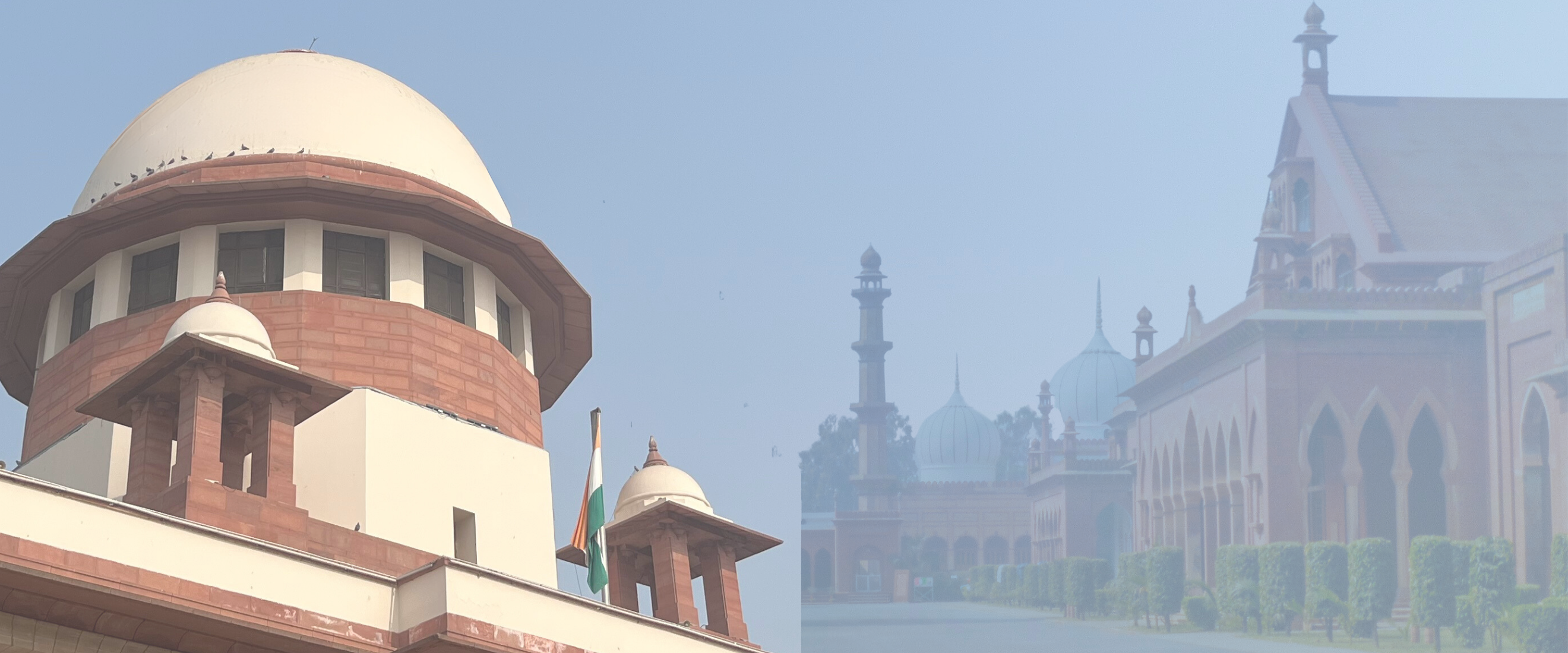Analysis
Who is a minority?
In the AMU hearings, respondents audaciously argued there were no minorities in colonial India. Will the Court consider it?

This week, a Constitution Bench of the Supreme Court reserved judgement in the case concerning the minority status of Aligarh Muslim University under Article 30 of the Constitution. I’m not going to attempt a potted history of the AMU saga here. For that, you must read our hearing reports. Instead, I want to talk about an argument made by the Union government and respondents which I found intriguing for its studied audacity: just who is a minority in India?
The university’s story began over one hundred years ago when Sir Syed Ahmad Khan founded the Muhammadan Anglo-Oriental College for the education of the Muslim community. In 1920, an imperial legislation converted the MAO College to AMU. The Union government claims that the MAO College lost its religious status when it became AMU. I say “religious status” and not “minority status” because one of the arguments made by the Union was that there was no concept of a minority group in British India.
The definition for ‘minority’ offered by Senior Advocate Rakesh Dwivedi, appearing for one of the respondents Vivek Kasana, covered three criteria: (a) the community must be numerically fewer than the majority; (b) if a numerically smaller group is the ruling power, it is not a minority; and (c) the group should identify itself as a minority.
Therefore, in Dwivedi’s view, any institution founded by Christians before independence could not have minority status. Similarly, he contended that Sir Syed Ahmad Khan never considered Muslims as a minority—he saw them as the rulers until the colonial government forcibly took charge. Soon after, Senior Advocate Yatindra Singh picked up the thread and claimed that any group which can affect an electoral outcome, such as India’s 23 percent Muslim population, cannot be a minority.
The argument appeared to come out of left field because the petitioners relied on a settled definition as laid down in T.M.A. Pai Foundation v State of Karnataka (2002), where the Court stated that the “community must be numerically less than 50 percent of the total population in any state.”
In the rejoinder, too, the petitioners dealt with the argument in a terse manner. There was a brief mention by Senior Advocate Rajeev Dhavan about how Muslims were always treated as minorities because there were laws granting them reservation in the imperial legislature. He reiterated the numerical definition of a minority from T.M.A. Pai
Interestingly, in T.M.A. Pai, Justice Ruma Pal, partly dissenting, had refused to consider the state as a unit for determining minority status, observing that the reference point should be the country as a whole. Three years later, in P.A. Inamdar v State of Maharashtra (2005), a seven-judge Bench highlighted the “many a questions” raised by the numerical test laid down in T.M.A. Pai. For instance, can an institution provide inter-state educational facilities and yet retain its minority character?
It will be interesting to see how the Bench will address the ‘who is a minority’ argument, given that it is bound by the test laid down by the 11-judge Bench’s decision in T.M.A. Pai. Agreeing with the Dwivedi and Singh may mean that several minority institutions established before 1950 will lose their status and protections under Article 30.
The motivation behind including minority rights was to protect against the domination of a linguistic or religious majority. The potential of this dominance resulting in the deprivation of group rights should be the key criterion for thinking through the question—who is a minority?
This article was first featured in SCO’s Weekly newsletter. Sign up now!